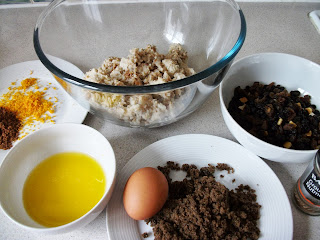The
summer fruit grown in our garden has been particularly good this year. We have harvested blackcurrants and
strawberries and the Tayberry - a cross between a raspberry and a blackberry -
is currently producing abundant juicy berries. They
are gorgeous, picked when they are fully ripe and still warm from the heat of
the sun, served with cream, ice cream, or a low-fat alternative.
However, as they ripen in batches, we often have just a few
at their best and so, this weekend, I decided to bake some light and delicious shell-shaped
French madeleines flavoured with lemon and whole Tayberries. (There was
actually enough mixture to also make a few containing tiny fudge pieces, as
well as a final tray flavoured with orange chocolate).
Madeleines will keep for a day or so in an airtight tin but,
as they have a somewhat ‘dry’ texture, they are best eaten fresh-from-the-oven and
are perfect, dusted with icing sugar, and accompanied by a cup of tea or
coffee. Bon appetit!
The basic recipe is as follows: 150g butter, 3 eggs, 150g caster sugar, 150g self-raising flour, 1/2 teaspoon baking powder, grated rind of 1 lemon
Preheat oven to 220C/200C fan, Gas 7. Grease a madeleine tray, dust with flour and shake off any excess or use, as I did, baking release aerosol spray.
Melt the butter and allow to cool slightly. Place eggs and sugar in a large bowl and whisk until pale and thick (I used mixer). Sift in half the flour with the baking powder and fold in gently with the lemon rind. Pour in half of the melted butter around the edge of the bowl and fold in. Repeat using the remaining flour and butter. Spoon the mixture into the prepare moulds - do not overfill - and add flavourings into the centre if desired.
Bake in oven for about 8 to 10 minutes. Ease out of the tin and cool on a wire rack. Regrease the tin and repeat until all the mixture has been used up.









